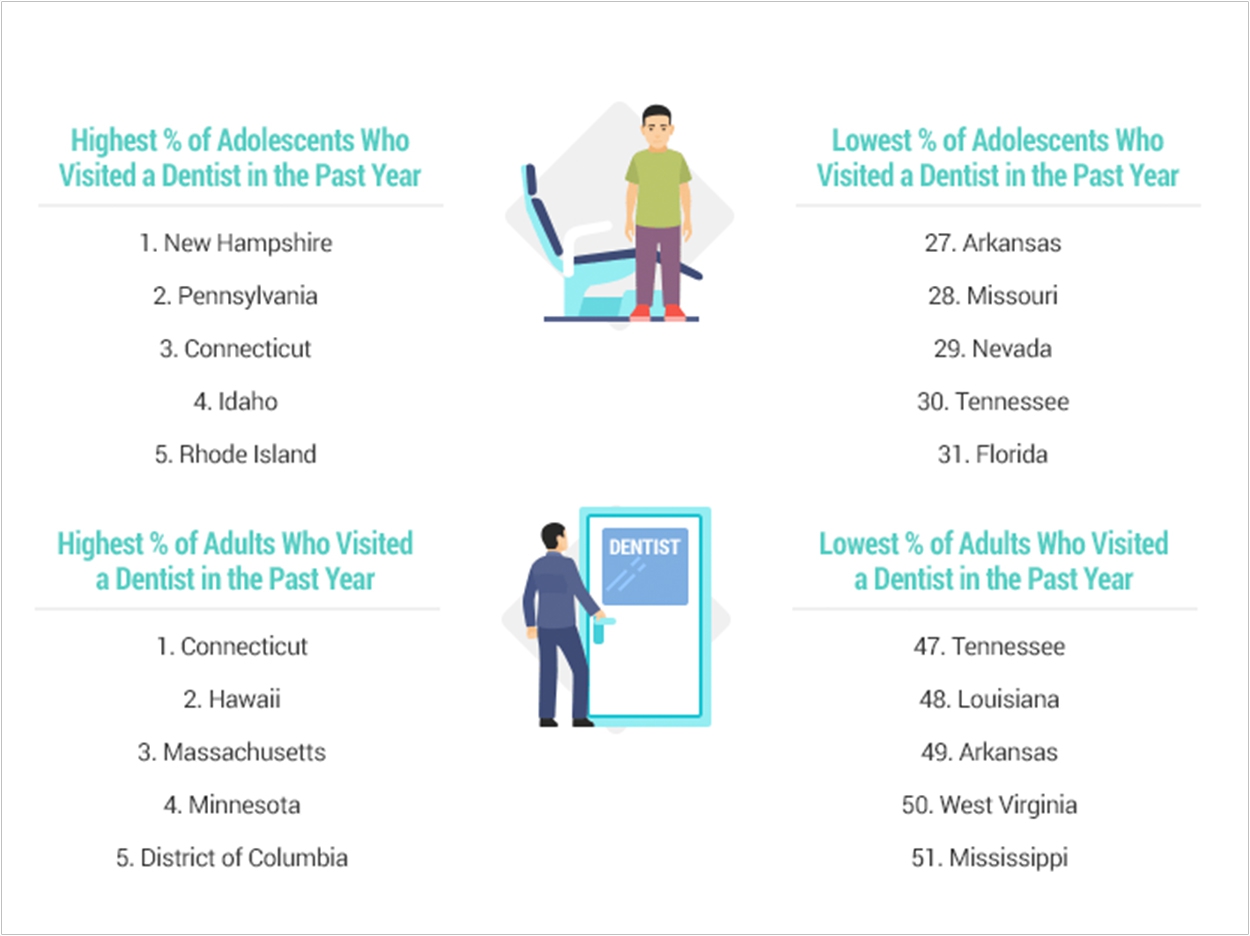
Wisconsin has the best oral health in the United States and Mississippi has the worst, according to WalletHub and its latest annual report of States with the Best & Worst Dental Health, based on 26 key metrics.
Criteria included the percentage of adolescents who visited a dentist in the past year, treatment costs, life satisfaction due to oral conditions, dentists per capita, sugar-sweetened beverage consumption, percentage of smokers, and other factors.
WalletHub used data from the Census Bureau, the Bureau of Labor Statistics, the Centers for Disease Control and Prevention, the Center for Health Care Strategies, the ADA, the Health Resources & Services Administration, and other stakeholders.
Wisconsin topped the list for the third year in a row, followed by Illinois, the District of Columbia, Minnesota, Connecticut, North Dakota, Michigan, Idaho, Massachusetts, and New Jersey rounding out the top 10.
Mississippi had the worst oral health for the second year in a row, and it was preceded in the bottom 10 by West Virginia, Arkansas, Montana, Louisiana, Alabama, Texas, Alaska, Florida, and California.
In other findings:
- Rhode Island has the lowest share of the population who couldn’t afford more dental visits due to costs, 37%, which was half of what Georgia reported at 74%.
- The District of Columbia has the most dentists per 100,000 residents, 68, which is 3.4 times more than Louisiana, which had the fewest at 20.
- The District of Columbia has the highest share of the population receiving fluoridated water, 100%, while Hawaii had the lowest share at 8.8%.
- Minnesota, Hawaii, and Illinois have the lowest share of adults with poor or fair oral condition, 22%, while Montana had the highest at 40%.
Noting that February is National Children’s Dental Health Month, WalletHub also noted how shaping positive oral health behaviors among children can lead to better oral health in adulthood.
“Beyond brushing and flossing, it is important to instill the value of good oral hygiene in people from a young age,” said Fazian Kabani, PhD, MBA, MHA, RDH, assistant director for diversity and faculty development and assistant professor at the Texas A&M College of Dentistry.
“Multiple theories suggest that people act upon health behaviors when they understand and are motivated by a particular value system. Therefore, it is imperative to teach children the value of good dental hygiene to yield a better prospect of good oral health as they grow and develop,” Kabani said.
Public health programs such as community water fluoridation and school sealant programs can have a positive impact on oral health as well, WalletHub said.
“Evidence has shown community water fluoridation to be an effective intervention for reducing the presence of dental caries in communities. It is important to note that a regulated dose of fluoride, 0.7 ppm, has been established for effective community water fluoridation,” said Kabani.
Kabani also noted that evidence continues to demonstrate the effectiveness of sealants in preventing tooth decay on the occlusal surfaces of teeth.
“Statistics demonstrate that health disparities are found more among lower-income, minority, and immigrant populations. Indeed, school sealant programs should be extended more aggressively, particularly in lower-income areas, to better prevent dental caries in children, but should also be extended to areas the contain diverse populations,” he said.
WalletHub further noted the impact that costs can have on people pursuing dental treatment, however, though public health may be able to help there as well.
“Oral healthcare can become more affordable through changes in public health policy and practice, most notably via allocating more public health funds towards oral healthcare services,” Kabani said.
“Unfortunately, people have to purchase a separate dental health insurance plan, because oral healthcare is not typically a covered service under general health insurance. We need to advocate for changes in public health policy to bridge the gap between medical and dental to help ensure a more affordable experience for the public,” he said.
“Fortunately, pediatric dental care is considered an essential healthcare service under the reformed national healthcare policy. However, adult and geriatric dental care remain an uncovered service, albeit for certain circumstances,” Kabani said.
“Medicaid and Medicare should both provide coverage for oral healthcare services, particularly because these government programs are intended to provide support to some of society’s most vulnerable populations,” he said.
Related Articles
Pandemic Prompts Half of All Americans to Postpone General Dental Checkups
COVID-19 Impacts Oral Health—Even If You Don’t Acquire the Viral Infection
Wisconsin Tops 2020 List of the States With the Best Oral Health












